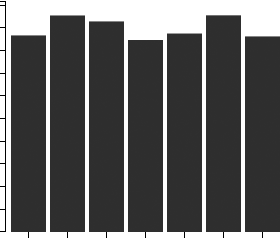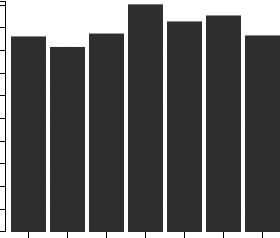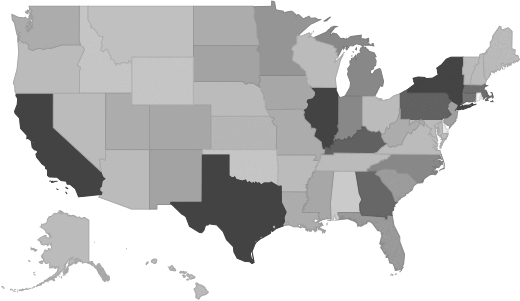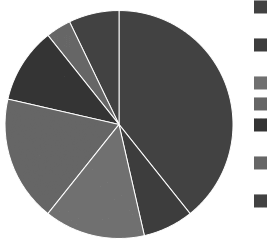Libraries & Archives Industry - Market Research Report
Industry Overview
This industry comprises establishments primarily engaged in providing library or archive services. These establishments are engaged in maintaining collections of documents (e.g., books, journals, newspapers, and music) and facilitating the use of such documents (recorded information regardless of its physical form and characteristics) as required to meet the informational, research, educational, or recreational needs of their user. These establishments may also acquire, research, store, preserve, and generally make accessible to the public historical documents, photographs, maps, audio material, audiovisual material, and other archival material of historical interest. All or portions of these collections may be accessible electronically.
Source: U.S. Census BureauMarket Size and Industry Forecast
This research report analyzes the market size and trends in the Libraries and Archives industry. It shows overall market size from 2020 to the present, and predicts industry growth through 2030. Revenues data include both public and private companies.
| Historical | Forecasted |
|---|
| 2020 | 2021 | 2022 | 2023 | 2024 | 2025 | 2026 | 2027 | 2028 | 2029 | 2030 |
|---|
| Market Size (Total Revenue) | Included in Report |
| % Growth Rate |
| Number of Companies |
| Total Employees |
| Average Revenue per Company |
| Average Employees per Company |
Source: U.S. government financial dataIndustry Revenue ($ Billions)

Industry Forecast ($ Billions)

Advanced econometric models forecast five years of industry growth based on short- and long-term trend analysis. Market size includes revenue generated from all products and services sold within the industry.
Geographic Breakdown by U.S. State
Market size by state reveals local opportunity through the number of companies located in the region. Each state's growth rate is affected by regional economic conditions. Data by state can be used to pinpoint profitable and nonprofitable locations for Libraries & Archives companies in the United States.
Libraries & Archives Revenue by State

Distribution by Company Size
| Company Size | All Industries | Libraries & Archives |
|---|
| Small Business (< 5 Employees) | Included |
| Small Business (5 - 20) |
| Midsized Business (20 - 100) |
| Large Business (100 - 500) |
| Enterprise (> 500) |
Libraries & Archives Industry Income Statement (Average Financial Metrics)
Financial statement analysis determines averages for the following industry forces:
- Cost of goods sold
- Compensation of officers
- Salaries and wages
- Employee benefit programs
- Rent paid
- Advertising and marketing budgets
The report includes a traditional income statement from an "average" company (both public and private companies are included).
| Industry Average | Percent of Sales |
|---|
| Total Revenue | Included |
| Operating Revenue |
| Cost of Goods Sold (COGS) |
| Gross Profit |
| Operating Expenses |
| Operating Income |
| Non-Operating Income |
| Earnings Before Interest and Taxes (EBIT) |
| Interest Expense |
| Earnings Before Taxes |
| Income Tax |
| Net Profit |
Average Income Statement

Cost of Goods Sold
Salaries, Wages, and Benefits
Rent
Advertising
Depreciation and Amortization
Officer Compensation
Net Income
Financial Ratio Analysis
Financial ratios allow a company's performance to be compared against that of its peers.
| Financial Ratio | Industry Average |
|---|
| Profitability Ratios | Included |
| Profit Margin |
| ROE |
| ROA |
| Liquidity Ratios |
| Current Ratio |
| Quick Ratio |
| Activity Ratios |
| Average Collection Period |
| Asset Turnover Ratio |
| Receivables Turnover Ratio |
| Inventory Conversion Ratio |
Salary information for employees working in the Libraries & Archives industry.
| Title | Percent of Workforce | Bottom Quartile | Average (Median) Salary | Upper Quartile |
|---|
| Management Occupations | 12% | Included |
| Chief Executives | 0% |
| General and Operations Managers | 3% |
| Business and Financial Operations Occupations | 11% |
| Business Operations Specialists | 9% |
| Computer and Mathematical Occupations | 29% |
| Computer Occupations | 28% |
| Software Developers and Programmers | 19% |
| Software Developers, Applications | 13% |
| Education, Training, and Library Occupations | 6% |
| Librarians, Curators, and Archivists | 5% |
| Arts, Design, Entertainment, Sports, and Media Occupations | 9% |
| Media and Communication Workers | 6% |
| Sales and Related Occupations | 14% |
| Sales Representatives, Services | 12% |
| Miscellaneous Sales Representatives, Services | 8% |
| Sales Representatives, Services, All Other | 8% |
| Office and Administrative Support Occupations | 16% |
| Information and Record Clerks | 9% |
| Customer Service Representatives | 5% |
| Customer Service Representatives | 5% |
Government Contracts
The federal government spent an annual total of
$57,596,252 on the libraries & archives industry. It has awarded 461 contracts to 157 companies, with an average value of $366,855 per company.
Top Companies in Libraries & Archives and Adjacent Industries
| Company | Address | Revenue
($ Millions) |
|---|
Included |



